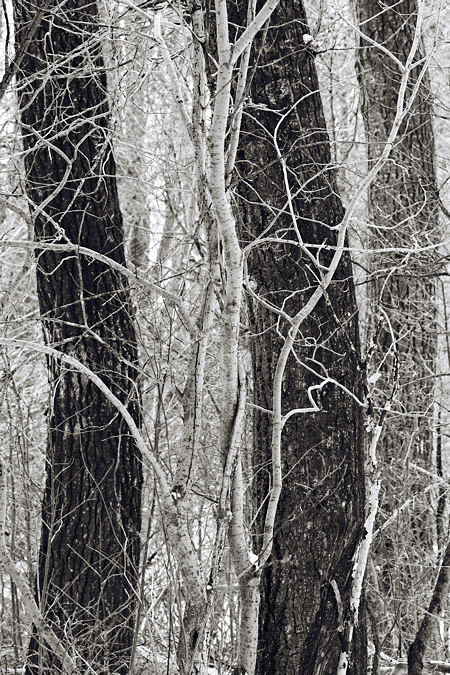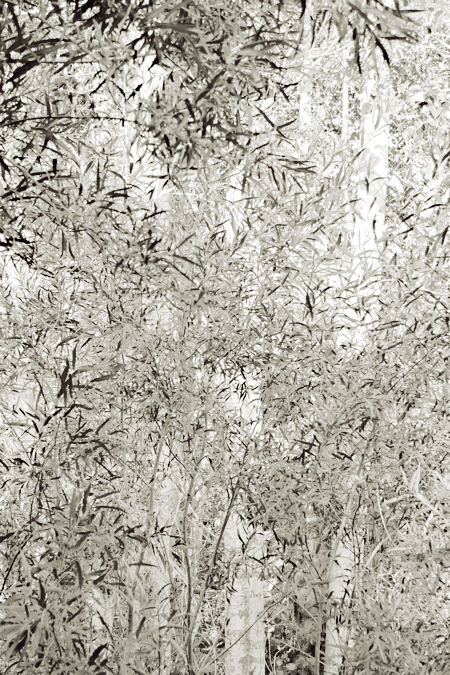
Internet as Frame: Minimalism

Painting From Life vs. From Photos
The design of web-pages for displaying art is a matter of great practical as well as aesthetic importance. One design that I find striking, because of its boldness, is Jannie Regnerus’ web-page. This page (detail below) is minimal to the extreme. It is so unlike what one is used to in a web-page that at first it seems confusing. But it is precisely this unusual quality that makes the layout a successful frame for Regnerus’ photography. One has the feeling of having left the noisy bustle of the internet and having arrived in a quiet place.

I say the design is bold is because, by departing from expectations, Regnerus takes a risk that visitors may be confused and leave the site before they see anything. For those visitors who do look more closely, the simplicity of the layout serves the intended role of providing a quiet context for the artwork.
Is minimalism inherently good for the internet?
Is Regnerus’ site a model for other internet sites?
First posted April ’06 [note some interesting comments there by Arthur].
The minimal approach, Regnerus’ model in particular, has influenced my thinking about website design; the Art & Perception layout reflects this. Could we use more eye-candy? My thinking is that the minimal layout allows the latest post define the site visually — ideal for an art site, as I see it.
Quote for Saturday – Sean Scully
Certain artists are unable to develop because they are disconnected from history. To me development is paramount. I think that development and humility go hand in hand.
-Sean Scully
Do we expect, rather, that successful development demands arrogant self-certainty? On reflection perhaps not, for arrogance implies that an artist knows dogmatically how to proceed, while humility involves productive acknowledgment of deep uncertainty.
-David Carrier, in Sean Scully
Half-finished, deleted, revised, and reviled

I was struck by Sunil’s post about his alteration/destruction of work into which he had put so much effort. In fact, I liked his revised “Palimpsest” very much, although I can see that it doesn’t resemble much of what he has shown us before this.
Because I have so many failed, partly completed, destroyed, altered, and despised pieces sitting around in boxes, baskets, photos and my memory, I thought I’d run through a taxonomy of my bad work and its place in my art-making universe. Ultimately my question is whether I’ve made adequate categories of “failure” or if there are others that could be added; in addition, I wonder if you can suss out what “runs” your failures — what, particularly if it’s not just a problem of quality, causes you to throw up your hands and ditch work.
So here are my categories. There’s work that simply fails — period, full stop. There’s work that gets altered, thus morphing into something else. There are series that come to an abrupt halt. And finally there’s work that’s put on hold.
Failed work has its own subcategories, of course, including failures to work the materials, failures of skill, failures of insight, and failures of resonances within one’s conceptual worlds. more… »
Gauging criteria
I was recently interviewed about my artwork and I found myself grappling with a concept about artwork that was dormant in my mind for a while.
I have always had a weakness for trying to find meaning in art and I strive to find and sometimes interpret meanings that the artist would not have even remotely thought of… This is a good thing as it is with reflection and thinking that we attain a deeper understanding of the forces that we encounter in today’s world.
My approach to looking or developing artwork, involves asking the following questions:
— Does the artwork evoke an emotional response in the onlooker at this point in time?
— How would a person interacting with the same at least 200 to 300 years from now perceive it and would it still carry at least some portion of its original emotional import?
This is the litmus that I use to view work and gauge its significance. Now I understand that very few of us can predict what our future generations would have in their minds with respect to aesthetic sensibilities, but putting on this lens is one way I tend to weed out the mountains of artwork that is churned out by thousands of artists all over the world these days.
I know a lot of you would not subscribe to my old fashioned, outmoded views, but I would very much be interested in learning about criteria that you consciously or unconsciously employ in gauging the significance of artwork that you behold.
The paradox of non-distracting distractions
Mark Hobson: Art-making . . . I ‘think’ about nothing when I am in the moment of picturing. . . Don’t think about it now, just picture it ‘intuitively’.
Birgit posted this from Cezanne: “…if I think while painting, if I intervene, why then everything is gone.”
Hobson and Cezanne are both essentially saying: verbal thought, stay out of the art.
The surprise to me is that highly distracting stimuli — the guys working in the café kitchen next door, the book on tape, can disturb me and leave me un-distracted at the same time. My impression from my own experience and what I have read in the comments of the previous posts is that the non-verbal artist “within” for the most part doesn’t care what kind of distracting words are passing through the mind, as long as they don’t interfere with the art-making.
Cogito ergo sum
When we ask the question, “What do you think about when making art?” the real question is: “When we say ‘you’, to whom are we referring?” They guy/gal inside with all the words thinks he or she is in charge, but the real action goes on separately despite the jabbering.
A bit spooky, no? Because, if you think about it, all that art-making doesn’t just happen. There must be a huge amount of judgement, information processing — thought in essence — without words or access to words. The only way to appreciate consciously/verbally what is going on is, as Hobson says, to ‘listen’, listen to the feelings the work evokes. Not that that’s either easy (with all that distraction) or necessary. Better to stay out of it, Cezanne seems to say.
How to make use of that unnecessary verbal thought while working?
